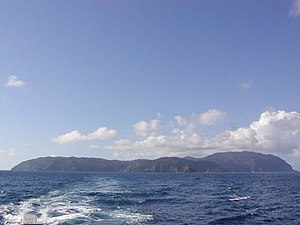
This is the map of Costa Rica.
Facts about Costa Rican Geography:
Costa Rica is the southernmost out of the five republics. Costa Rica is located on the Central American isthmus, 10° North of the equator and 84° West of the Prime Meridian It borders both the Caribbean Sea (to the east) and the North Pacific Ocean (to the west), with a total of 1,290 kilometers (802 miles) of coastline (212 kilometers / 132 miles on the Caribbean coast and 1,016 kilomoters/ 631 miles on the Pacific. It is located on the continent of North America. It is bordered in the north by Nicaragua and in the south by Panama.
Cerro Chirripó is the highest point in Costa Rica. It reaches up to 12,532 ft, the fifth highest peak in Central America.
Irazú Volcano is the highest volcano in Costa Rica.It's boundaries and natural conventional and mixed, and then the San Juan River separates Costa Rica from it's northern boundaries.
Rain Forests:
The Rainforests are very humid and are home to many animals like birds, monkeys, lizards, snakes, sloths, butterflies and frogs, puma, jaguar, and Harpy Eagle. You could also see some of the rarest wildlife in the forest like Scarlet Macaws, Morpho Butterflies, Leatherback turtles and the tiny Central American squirrel monkey. They are mostly found in the Southernmost part of the Osa Peninsula.
Natural Resources:
The natural resources in Costa Rica are gas, oil, and hydropower. Costa Rica also counts with wind power as a natural resource. It is about 82% of Costa Rica’s energy that is produced thanks to the hydropower, only 8% of Costa Rica electricity is generated by oil, and the remaining percentage is for the other sources such as geothermic energy, solar and wind power. Another natural resource that is often overlooked in Costa Rica is oxygen production. Having so many trees and so much vegetation assists in photosynthesis and generates oxygen in exchange of carbon dioxide. Other natural resources include forest products, fisheries products. As far as agriculture there are bananas, pineapples, coffee, beef, sugar, rice, dairy products, vegetables, fruits and ornamental plants.
Water bodies in Costa Rica:
The San Juan River is 117.9 miles long. It flows east out of Lake Nicaragua. It is part of the border between Costa Rica and Nicaragua.
The Sarapiquí River, or Rio Sarapiquí is another river in Costa Rica. It is a tributary of the San Juan River.
If you like the ocean, then take a tour on the coastline and you could see coral reefs. Or if you prefer, you can see a various varieties of marine animals like whales, different dolphin species, sea turtles and the endangered West Indian manatee while you're on a boat! Or maybe even on the ocean's shores.
Photo Gallery

Manuel Antonio
One of the most visited beach in Costa Rica.
 |
 |
|
| Lake Nicaragua or Cocibolca or Granada is a big lake in Costa Rica. |
Costa Rica also comprises several islands. Cocos Isand |
|
|

|
|
|
| Rio Drake
Flows to bahia Drake in the Osa peninsula
|
La Paz Waterfall
This waterfall in on the road to the Poas volcano and can be seen from the road.
|
|
| |
|
|
|

What do you think this is? If you guessed a volcano, you're right! It's the Rincón de la Vieja volcano.
|
The Irazú Volcano The Irazú Volcano is an active volcano in Costa Rica, situated in the Cordillera Central close to the city of Cartago. The Irazú Volcano is an active volcano in Costa Rica, situated in the Cordillera Central close to the city of Cartago.
|
|

| Paos Volcano: Eruptions of water and steam are called geysers. Frequent geyser eruptions have helped it to become known as the World's Largest Geyser. |
|
|
|
Links:
Costa Rica Tourism. Costa Rica Tourism. http://www.tourism.co.cr/ . 2006-2009. March 2009.
Wikimedia Foundation, Inc. The free encyclopedia that anyone can edit. Costa Rica Wikipedia. http://en.wikipedia.org/wiki/Costa_Rica. March 2009.
Costa Rica Photos. http://www.costaricaphotos.com/. Published 2007 by Edenia Systems International. March 2009.
Comments (0)
You don't have permission to comment on this page.